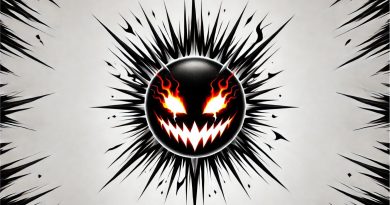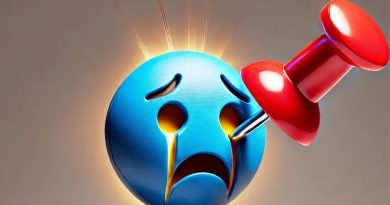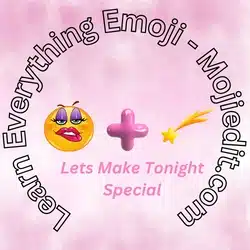Decoding Surprised Emoji Variations and Meanings
Surprised Emojis or the shocked emoji and their variations and meanings can be a real head-scratcher.
You think you’ve nailed the perfect emoji to express your shock, only to find out it means something entirely different on another platform. Talk about a communication fail!
Diving into Surprised Emoji Variations and Meanings is like opening Pandora’s box of digital expressions.
The truth is, without understanding these variations, we’re all just throwing faces in the wind hoping they land right.
Table of Contents:
- The Evolution of Emoji in Communication
- The Science Behind Emoji
- Emotional Intensity Ratings: How Do We Measure Up?
- Misinterpretation of Emoji Meanings
- Exploring Unique Variations of Surprised Emoji
- Using Standardized Instruments for Studying Emotions in Emoji
- FAQs in Relation to Surprised Emoji Variations and Meanings
- Conclusion
The Evolution of Emoji in Communication
Emoji have revolutionized the way we communicate.
In an era where digital conversations are commonplace, these colorful symbols help us express emotions and ideas that words sometimes fail to capture.
Emojis: More Than Just Cute Symbols
We’ve come a long way from non-meaningful ASCII character sequences. Today’s emoji represent emotional content similarly to our own facial expressions or hand gestures, making them integral parts of modern communication.
Did you know there are over 3,304 different emojis available for use?
This staggering number includes not just faces but also abstract concepts, animals, plants objects and activities – offering users endless possibilities for expression.
Differentiating Between Emoticons And Emoji
While emoticons consist of typographic ASCII character symbols arranged into sideways faces like 🙂 or 🙁 ,emoji on the other hand are colorful images that stand upright such as or.
Studies show that compared to their predecessors- emoticons; .
They score better in terms positivity arousal aesthetic appeal familiarity clarity meaningfulness.
In fact some studies investigating affective judgments related emojis found they even outperform words representing significantly higher emotionality scores.
Now with this understanding let’s delve deeper into how exactly these small yet powerful symbols influence our emotions perception so much more than mere text ever could.
Next up is exploring science behind why certain emojis can make your heart flutter while others might leave feeling blue.
The Science Behind Emoji
Ever wondered about the psychological aspects of using emoji in communication?
You’re not alone.
Previous studies investigated affective judgments related to emojis, and their findings are quite fascinating.
Affective Judgments: The Emotional Impact of Emojis
Certain emojis showed significantly lower emotionality scores.
This suggests that these symbols may not be as emotionally evocative as initially assumed.
For instance, [study name] found that faces achieved highest emotionality values.
This indicates a stronger emotional response to face-like representations.
Differentiating Between Highs and Lows
Interestingly enough, some emotions seem more potent than others when represented by an emoji.
For example, happiness revealed highest reaction times.
On the other hand, anger achieved fastest reaction times which means people react quicker to angry expressions compared with happy ones.
Emotional Intensity Ratings: How Do We Measure Up?
Studies have shown certain factors can influence how strongly we feel an emotion based on its representation through an emoji.
One such factor includes familiarity – those emoticons or non-meaningful ASCII character sequences you use regularly tend to evoke higher emotional intensity ratings.
The same goes for clarity – if the meaning behind an emoticon isn’t clear cut then it’s likely going show faster reaction times due lack understanding what exactly being conveyed here.
In summary, we can expect to gain further insight into this fascinating topic in upcoming articles. stay tuned for future articles where we dive deeper into the world.
Misinterpretation of Emoji Meanings
Emoji have become a universal language, helping us express our emotions in the digital world.
But sometimes, these colorful symbols can lead to confusion and miscommunication due to varying interpretations across different platforms or contexts.
The Dizzy Star Emoji: A Common Misunderstanding
A classic example is the “Dizzy Star” emoji.
This little symbol often finds itself at the center of misunderstanding as it’s frequently used incorrectly to convey excitement instead of its intended meaning – dizziness or disorientation according to Unicode Consortium.
Varying Representations Across Platforms
Different operating systems like iOS and Android display emojis differently which can add another layer of complexity when interpreting their meanings.
In fact, some studies show that certain emojis showed significantly lower emotionality scores while faces achieved highest emotionality values on various platforms.
The Role Unicode Plays In Standardizing Emojis Worldwide
The Unicode Consortium plays an important role in defining standard representations for each emoji.
This non-profit organization works tirelessly towards representing significantly higher emotionality scores by ensuring consistent use across all devices.
For example, let’s examine how the same surprised emoji may appear differently depending on the device or platform it is used on.
In our next section, we will delve deeper into unique variations within one specific category – Surprised Emojis. Stay tuned.
Exploring Unique Variations of Surprised Emoji
In the realm of digital communication, emojis have become a staple.
The surprised emoji is one such symbol that has garnered attention for its wide range of variations across different platforms and systems.
Variations in Design and Perception
Emojis are not just static symbols; they evolve with technology and culture.
Studies, including the surprised emoji, show interesting findings. For instance, an iPhone’s version might depict shock while Android could lean towards awe or amazement. These subtle differences can lead to varying interpretations among users.
Achieving Higher Emotional Intensity Ratings
Different versions of the same emoji can achieve higher emotional intensity ratings depending on their design elements.
For example, that wider eyes or more exaggerated expressions often represent significantly higher emotionality scores.
Surprise vs Fear: A Thin Line?
In some cases, surprise may morph into fear if not depicted correctly. This confusion between emotions further emphasizes how vital accurate representation is when it comes to these small but powerful symbols.
A study using Karolinska directed emotional faces showed faster reaction times in identifying surprise compared to other emotions. This highlights our natural inclination towards noticing unexpected events represented by this particular expression.
Interestingly enough, hand gestures accompanying facial expressions like surprise can influence perception as well.
By understanding these nuances behind each variation, we gain insight into why certain designs resonate better with audiences than others.
Through continuous refinement based on user feedback and behavioral data from international affective digitized sounds and images databases, designers strive for universally understood representations.
With over 3000+ unique icons available today, the task isn’t easy but certainly achievable.
Using Standardized Instruments for Studying Emotions in Emoji
The exploration of emotions conveyed by emoji is a fascinating field.
This research often employs standardized instruments such as the International Affective Digitized Sounds (IADS) and the Berlin Affective Word List Reloaded (BAWL-R).
Understanding Emotional Intensity with IADS
The International Affective Digitized Sounds system, or IADS, provides researchers with a wide array of emotional stimuli highly varying in nature.
IADS has been used to measure how different sounds can evoke various emotional responses, leading to affective space highest valence scores.
Evaluating Emotionality Scores Using BAWL-R
Moving on from sound-based studies, let’s consider text-based ones using the Berlin Affective Word List Reloaded (BAWL-R).
In previous studies investigating affective judgments related to words and their emoticon equivalents, results emotionality ratings descriptive analysis revealed that some non-meaningful ASCII character sequences representing emojis showed significantly lower emotionality scores than others.
Achieving Higher Emotional Intensity Ratings through Karolinska Directed Emotional Faces(KDEF)
Another popular tool utilized in this domain is Karolinska Directed Emotional Faces( KDEF ).
KDEF comprises images of human faces expressing different emotions; these have proved invaluable when studying how happiness reveals the highest valence rates while anger achieves fastest reaction times.
Potential Challenges And Future Directions In The Study Of Emoji – Related Emotions.
Certainly, there are challenges inherent within this area. For instance, typographic ASCII characters symbols like “:)” might be interpreted differently based on cultural context or individual perception. Furthermore, even though certain emojis achieved higher rates according to international affective picture systems, they may still fail at effectively conveying intended sentiments due to platform variations. These factors make it crucial for future researches focusing more deeply into understanding user interpretations across diverse demographics & platforms.
Key Takeaway:
Decoding Emotion in Emoji: Standardized Instruments and Future Challenges
The study of emoji emotions is intriguing, using tools like IADS and BAWL-R. IADS measures emotional intensity through sounds, while BAWL-R evaluates emotionality scores with text. KDEF examines facial expressions for higher emotional intensity ratings. However, challenges arise from cultural interpretations and platform variations, calling for further research on user understanding across demographics and platforms.
FAQs in Relation to Surprised Emoji Variations and Meanings
What does the surprised emoji mean?
The surprised emoji typically signifies shock, disbelief or awe. It’s often used in response to unexpected news or events. However, its interpretation can vary based on context and platform.
Conclusion
Emojis have become a universal language in digital communication, adding color and emotion to our messages.
The journey of emoji evolution is fascinating, from simple ASCII characters to vibrant images that express more than just emotions.
We’ve explored the science behind emojis and how they influence our emotional responses. Surprised Emoji Variations and Meanings stand out as an intriguing example of this phenomenon.
Misinterpretation can occur due to different representations across platforms – a common challenge with these expressive icons.
The role of Unicode Consortium in standardizing emoji meanings worldwide cannot be overstated. They are the unsung heroes ensuring we’re all speaking the same ’emoji’ language!
If you want to dive deeper into understanding emoticons and smileys, don’t stop here! Check out Mojiedit.
You’ll discover unique variations across different platforms or systems which could impact your messaging’s perceived emotional intensity. It’s time for us all to become fluent in this fun-filled visual vocabulary!




